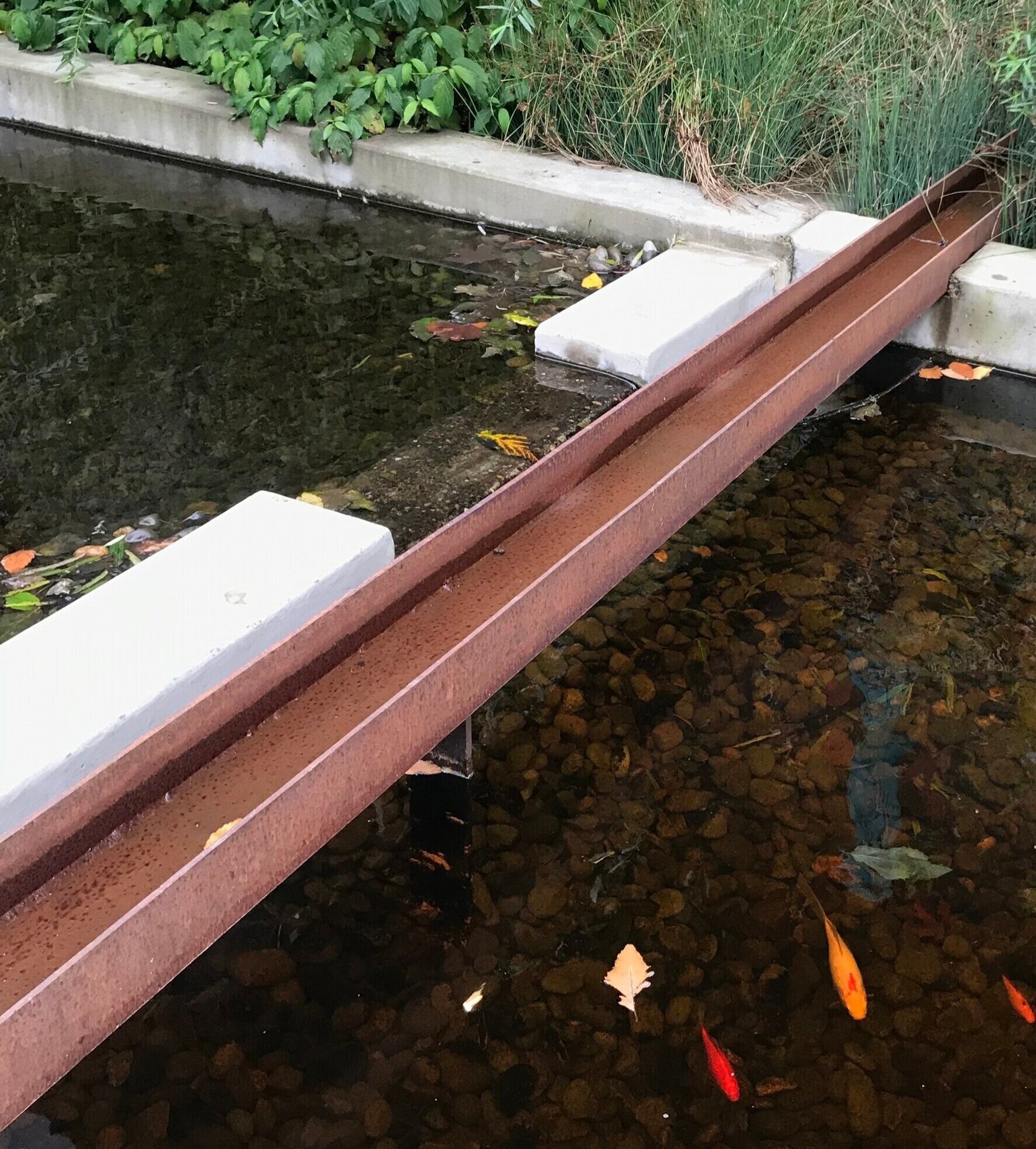A Beautiful Stormwater Detail: Runnels
Directing Stormwater
A stormwater runnel is a narrow and shallow channel that collects water from a source and directs it to an appropriate location such as a planter or drainage basin. The source can be a downspout from a roofline or pavement that slopes towards the runnel. A runnel is an alternative to piping the water from the source and can be an aesthetic, practical, or economical solution. Often site conditions can prevent piping, making a runnel an excellent alternative. Using runnels is also a good way to embrace stormwater movement through a project.
Runnels can distribute water to many different conditions such as a biofiltration planter, raingarden, or varying types of drainage basins.
Variations in runnel design elements are endless. Runnels can be curved or straight, long or short, and can be made out of a variety of materials. Common materials seen in runnel design include concrete and metal. They can also be designed with obstructions that can be audibly and visually pleasing when storm water is flowing through them. Rocks and stones set in concrete can provide obstructions, texture and interest even when the runnel is not moving water.
Photo: While on our annual office field trip we visited the ASLA award-winning Hassalo on 8th by Place in Portland, OR. Here a corten steel runnel moves stormwater from a hardscape path to a biofiltration planter. The runnel over the pool creates a visually interesting layering effect.
Photo: At Growing Vine Street in Seattle a smooth stone runnel delivers water to a basin filled with stones. Designed by Carlson Architects, Buster Simpson, GAYNOR Inc, SvR
Considerations
Maintenance
The level of maintenance the runnel will receive can help inform design and material choices. Runnel “obstacles” and texture will require more maintenance as planting debris such as leaves or flower petals get stuck more easily in tighter passages and will need to be removed to allow the runnel to work properly.
Slope
A runnel needs to have a minimum slope of .5% for drainage purposes, but the slope can increase as needed to fit changes in topography. A smooth runnel at a steeper slope will be less likely to catch debris than a runnel with texture at a .5% slope.
Photo: The gaps in the stone provide enough room for stormwater to run thorough while allowing for easy pedestrian crossing. Portland State University, Stephen Epler Hall by Mithun
A steeper runnel follows the slope of the adjacent stairs at the 10th Avenue Hillclimb by GGLO. On the right, a runnel runs and falls with the tread of the stairs at the Urban Center Plaza Stormwater Retrofit Portland - by Urban Rain | Design
ADA Access
Considerations should also be made if a runnel needs to cross a path of travel to get the water to its destination. Covering a portion of the runnel with a drainage grate turns the runnel into a trench drain and allows ADA access without obstructing the water moving under it.
Functional or Artistic?
A runnel can be designed to be purely functional or an eye-catching artistic detail in the landscape. A runnel might be right for your property if you need a captivating way to move stormwater and would like to integrate stormwater management throughout your property. Runnel examples can be found all over the Pacific North West but a variety of runnel styles can be seen along Vine Street in Belltown, Seattle where there has been a concentrated effort to create an artful urban watershed.
A short narrow runnel moves stormwater overflow from one basin to another and provides audible and visual interest at Vine Street, Seattle by Carlson Architects, Buster Simpson, GAYNOR Inc, SvR







